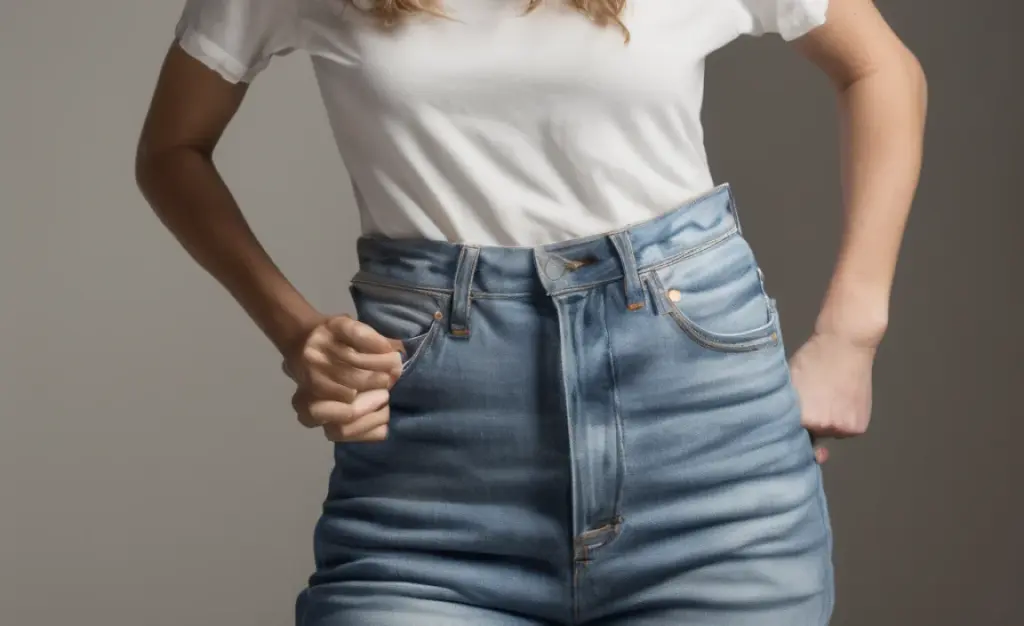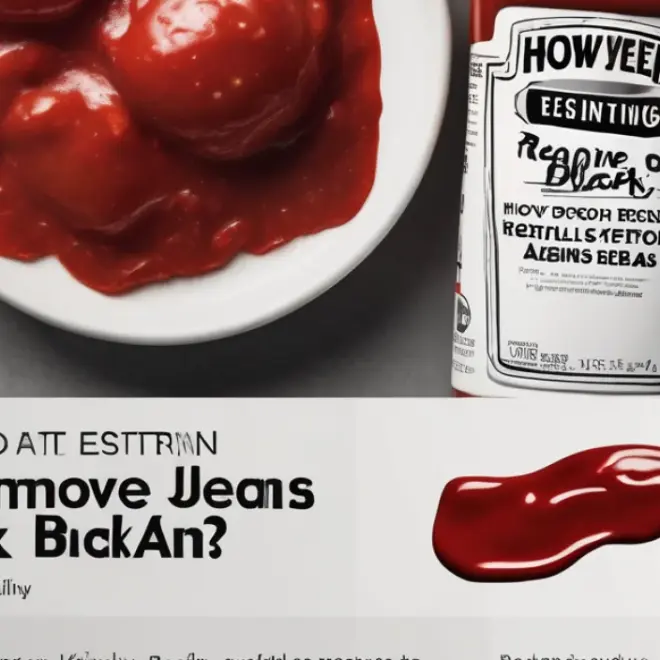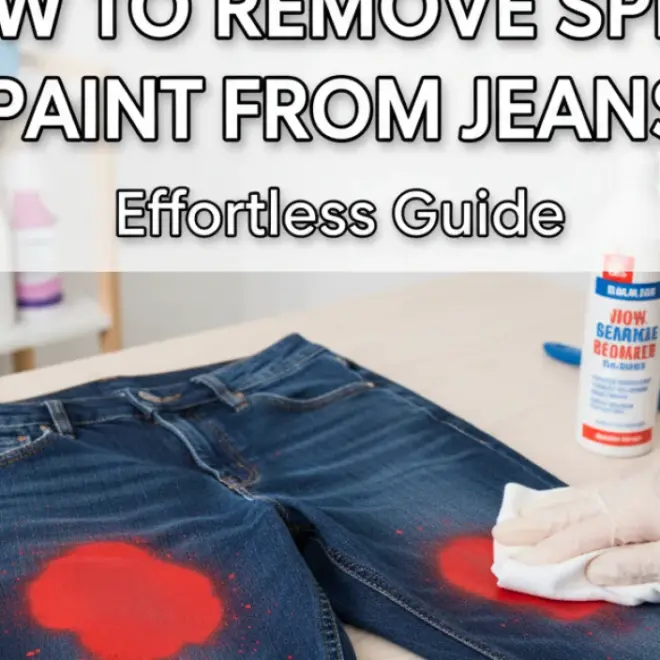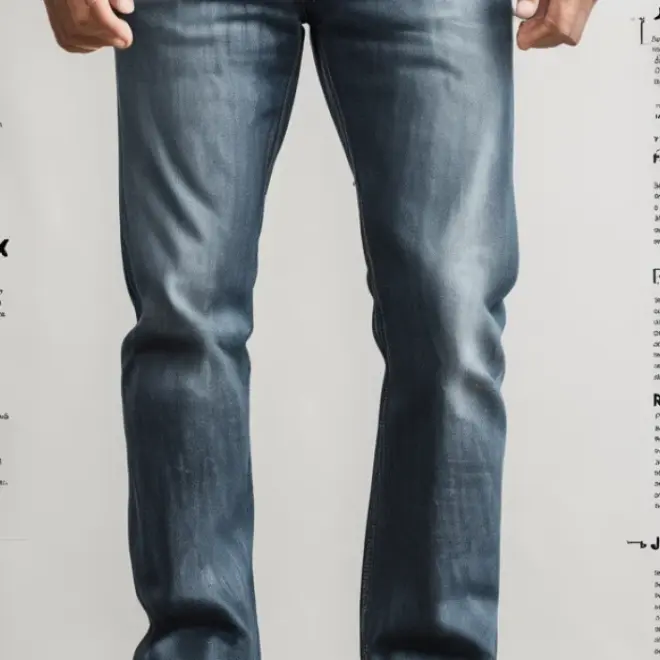Quick Summary: Learn how to hem mom jeans easily using a clever vinegar trick to create a clean, no-sew finish. This simple method requires basic supplies and provides a professional look without needing sewing skills, perfect for freshing up your favorite denim.
How to Hem Mom Jeans: The Genius Vinegar Trick Explained
Mom jeans. They’re comfortable, they’re cool, and they’re a staple in many wardrobes. But sometimes, that perfect pair is just a little too long, breaking the stylish silhouette we aim for. You might be thinking about cutting them, but that can lead to fraying and an unfinished look. Don’t worry! There’s a brilliant, no-sew way to get that perfect cropped length using a common household item: vinegar. This guide will walk you through a simple, effective method to hem your mom jeans beautifully, giving them a fresh, custom fit without needing a sewing machine or any complicated skills.
Why Use the Vinegar Method for Hemming Jeans?

Traditional hemming can seem daunting. You might lack sewing experience, the right tools, or simply the time to tackle it. Cutting jeans can look messy if not done carefully, and sewing requires practice. The vinegar method offers a fantastic alternative. It’s surprisingly effective at helping to set and secure fabric, leading to a cleaner, more finished edge than a simple cut. It’s a hack that’s gained popularity for its ease and excellent results, especially for casual denim like mom jeans.
Here’s why this method is a win:
- No Sewing Required: Perfect for those who aren’t comfortable with a needle and thread.
- Clean Finish: Creates a neater edge compared to simply cutting.
- Cost-Effective: Uses items you likely already have at home.
- Quick & Easy: Can be done in under an hour.
- Customizable Length: You decide exactly where to cut.
Understanding the Vinegar “Magic”

So, how does vinegar help? White vinegar is acidic. When applied to certain fabrics, especially cotton denim, it can help to stiffen the fibers slightly and assist in setting them. While it’s not a permanent glue, it provides enough structure to the cut edge right after you trim, reducing the tendency for the denim to unravel excessively and giving it a slightly crisper appearance. Think of it as a temporary fabric stiffener that aids in creating a cleaner cut line. For more profound fabric treatments, consult resources like the Textile Museum’s guidance on fabric care and repair.
What You’ll Need: Your Hemming Toolkit

Gathering your supplies is the first step. You don’t need a lot, making this an accessible project for anyone. Having everything ready will make the process smooth and efficient.
Essential Tools:
- Mom Jeans: The star of the show!
- Sharp Fabric Scissors: Crucial for a clean cut. Kitchen shears can work in a pinch, but fabric scissors are best.
- White Vinegar: Standard household white vinegar.
- A Spray Bottle: For even application of the vinegar.
- A Ruler or Measuring Tape: To ensure an even hem.
- Fabric Chalk or a Removable Fabric Marker: To mark your desired length.
- A Flat Surface: A table or clean floor to work on.
- Optional: Iron and Ironing Board: For a crisper finish if desired.
Step-by-Step Guide: Hemming Your Mom Jeans the Vinegar Way

Let’s get started! Follow these steps carefully for the best results. Remember to work on a flat, clean surface, and take your time to ensure accuracy, especially when measuring.
Step 1: Try Them On and Measure
The most important part is getting the length right. Put on your mom jeans and the shoes you’ll most likely wear with them. Stand in front of a mirror. Decide where you want the hem to fall. Do you want them right at the ankle bone? Just above? Slightly shorter for a more cropped look? Once you’ve decided, use your fabric chalk or marker to make a small dot or line at the desired length on the outer seam of one leg. Repeat on the other leg, ensuring it’s at the same height.
Step 2: Mark Your Cutting Line
With the jeans still on, or carefully laid out flat, use your ruler to draw a straight line across each leg at your marked point. It’s often best to make this line about 1 to 1.5 inches below your desired final hemline. This extra fabric will be cut off, giving you a buffer. Ensure the line is parallel to the existing hem. If the jeans have a slightly flared leg opening, try to keep your new line parallel to the original hem as much as possible.
Step 3: Lay Jeans Flat and Pre-Mark Cut
Carefully take off the jeans and lay them flat on your working surface. Smooth out any wrinkles. Double-check that the marked lines on both legs are at the exact same height. Now, it’s time to mark your actual cut line. If you’re aiming for a clean, no-fray edge, you’ll cut just below the marked line, leaving a small amount of fabric to work with. For a more intentional frayed look, you might cut a bit higher, allowing more original fabric to fray.
Step 4: The Vinegar Application
Now for the magic! Fill your spray bottle with white vinegar. Generously spray the area of the denim just below your marked cutting line. You want the fabric to be thoroughly damp, but not dripping wet. This dampening helps the fabric hold a crisper edge when cut.
Step 5: Cut the Excess Denim
Using your sharp fabric scissors, carefully cut along the line you marked as your cutting line. Cut straight across the leg. Go slowly to ensure a clean, even cut. As you cut, you should notice the fabric feels a bit firmer due to the vinegar. For the best results, try to make one continuous cut on each leg if possible.
Step 6: Optional – Ironing for a Crisper Edge
For an even cleaner look, you can iron the raw edge. While the vinegar is still slightly damp, carefully press the raw hem upwards towards the inside of the leg. You can iron it flat or create a very slight cuff. The vinegar will help this fold stay in place as it dries. If the fabric has dried too much, you can lightly re-dampen the edge with vinegar or water and then iron. This step is especially helpful if you’re not going for a deliberately frayed look. Properly pressing can make a significant difference in the final appearance, similar to how professional garment makers achieve crisp finishes. For more on fabric pressing, investigate resources like the Cotton Incorporated’s guide on fabric care and finishing.
Step 7: Let it Dry
Allow your jeans to air dry completely. This is crucial for the vinegar to set the fabric fibers as much as possible and for any crease you’ve made to stabilize. You can hang them or lay them flat. Avoid using a machine dryer, as excessive heat can sometimes alter fabric texture and might undo some of the subtle stiffening effect from the vinegar.
Step 8: Final Check and Styling
Once dry, try on your perfectly hemmed mom jeans! They should have a clean, crisp edge. If you opted for a slight fold, it should be holding its shape well. Now you have a custom-length pair of jeans ready to go. You can leave the hem as is for a sharp, clean look, or you can gently brush the edge with a wire brush or pumice stone to encourage a more relaxed, subtly frayed appearance if that’s your style.
Pros and Cons of the Vinegar Hemming Method
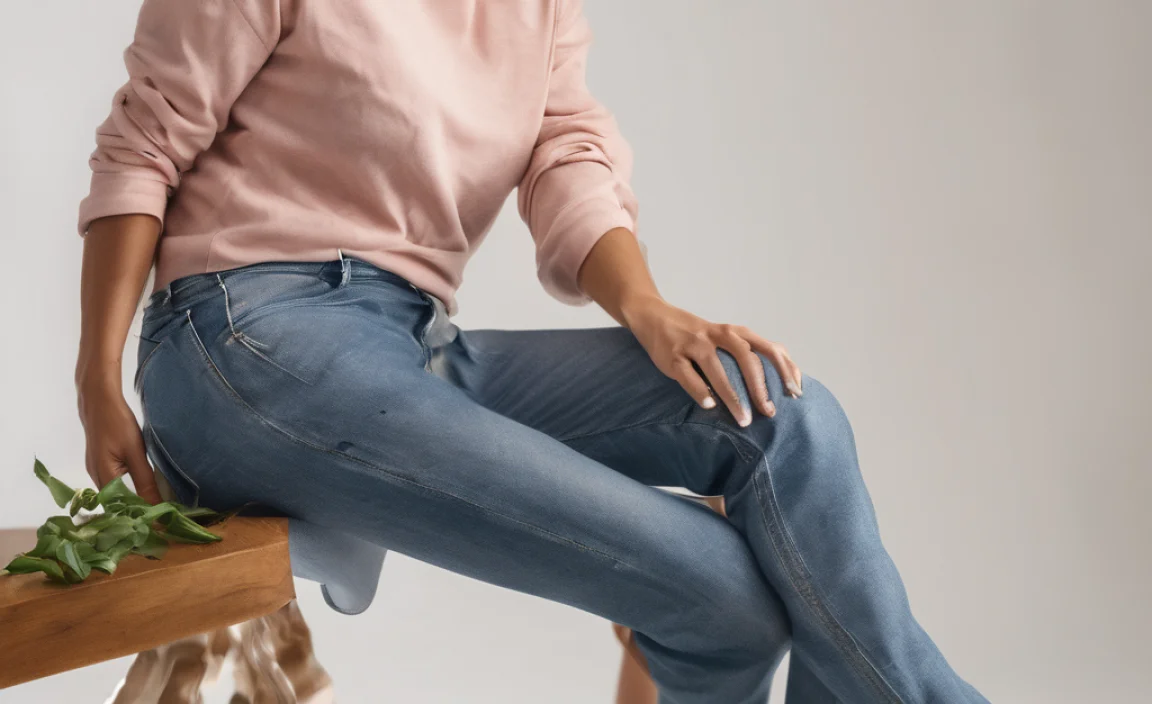
Like any DIY technique, the vinegar hem trick has its advantages and disadvantages. Understanding these can help you decide if it’s the right method for your specific needs.
| Pros | Cons |
|---|---|
| Extremely easy to do with minimal skills. | May not be suitable for very delicate or synthetic fabrics without testing. |
| Requires common household items, making it very affordable. | The effect is temporary; vigorous washing might eventually lead to fraying. |
| Provides a cleaner edge than a simple cut, reducing excessive fraying. | Doesn’t create a traditional folded hem and stitching; might not be suited for formal wear. |
| Quick and can be completed in a short amount of time. | Requires precise cutting for the best results. |
| Allows for a custom length adjustment for perfect fit. | Vinegar smell might linger slightly until the first wash, though it dissipates. |
Troubleshooting Common Issues
Even with a simple method, you might encounter a hiccup. Here are some common problems and their solutions:
- Uneven Cut: If your cut isn’t perfectly straight, don’t panic. You can often go back and trim carefully with your scissors to even it out. Wear your jeans and mark the spots that are too long for a precise guide.
- Excessive Fraying: If the denim starts to fray more than you’d like after drying, you can try gently tugging threads to control the amount of fraying, or use a fabric glue stick sparingly on the inside to stabilize loose threads. A light spritz of hairspray can also help temporarily.
- Slightly Stiff Edge: After drying, the edge might feel a little stiff. This usually softens up after wearing and washing. You can also gently flex or rub the hem between your fingers to break it in.
- Vinegar Smell: The vinegar odor is usually very faint once dry and will disappear completely after the first wash. If you’re sensitive to the smell, you can rinse the hem with water after cutting and before drying, though this may slightly reduce the stiffening effect.
Caring for your Newly Hemmed Jeans
To keep your hemmed mom jeans looking their best:
- Washing: Wash them inside out in cold water on a gentle cycle. This helps protect the hem and any potential fraying you’ve encouraged.
- Drying: Air drying is always recommended for denim to preserve its shape and color. If you must use a dryer, use a low heat setting.
- Storage: Fold or hang your jeans neatly to prevent creases at the hem.
Frequently Asked Questions About Hemming Mom Jeans with Vinegar
Q1: Will the vinegar damage my jeans?
No, diluted white vinegar is a mild acid that is safe for cotton denim. It helps to temporarily stiffen the fibers for a cleaner cut and will wash out. Always use standard white vinegar and test on an inconspicuous area if you have particularly delicate or colored denim.
Q2: How long does the vinegar hem effect last?
The vinegar treatment provides a crisper edge immediately after cutting and drying. It’s not a permanent adhesive. The edge will soften over time and with wear, and after washing, it will behave much like a standard cut hem, potentially fraying naturally, which is often the desired look for mom jeans.
Q3: Can I use apple cider vinegar instead of white vinegar?
While apple cider vinegar has similar acidic properties, it’s best to stick with plain white vinegar. Apple cider vinegar can sometimes leave a slight yellowish tint on light-colored fabrics, and white vinegar is generally more neutral and effective for this purpose.
Q4: What if I want a folded hem, not a raw edge?
This vinegar trick is primarily for achieving a clean, no-sew raw edge. If you want a traditional folded hem, you would need to carefully fold the fabric up twice (about 1/2 inch each) and then sew it in place with a needle and thread or a sewing machine. You can use the vinegar to help press the folds crisply before sewing.
Q5: How do I get a perfectly straight cut?
Use a good pair of sharp fabric scissors and a ruler to guide your cut. Lay the jeans flat and smooth out wrinkles before cutting. For extra accuracy, you can use a rotary cutter and a quilting ruler on a self-healing mat, but fabric scissors are perfectly adequate for most people.
Q6: My jeans are very stretchy. Will this method work?
This method works best on traditional, non-stretch or low-stretch denim, which is typical for mom jeans. If your jeans have a high percentage of elastane or spandex, the fabric might be too stretchy and prone to rolling or fraying significantly even with the vinegar. For very stretchy denim, a sewn hem is usually more effective.
Conclusion: Your Perfectly Hemmed Mom Jeans Await!
Mastering the no-sew hem with the vinegar trick is a game-changer for anyone who loves their mom jeans but wishes for a better fit. You’ve seen how simple ingredients and a few careful steps can transform your denim, giving you that custom look without the hassle or expense of a tailor. This method empowers you to take control of your style, ensuring your favorite pieces always fit just right. So go ahead, grab that bottle of vinegar, and give your mom jeans the fresh, tailored update they deserve. Enjoy your perfectly hemmed denim!


